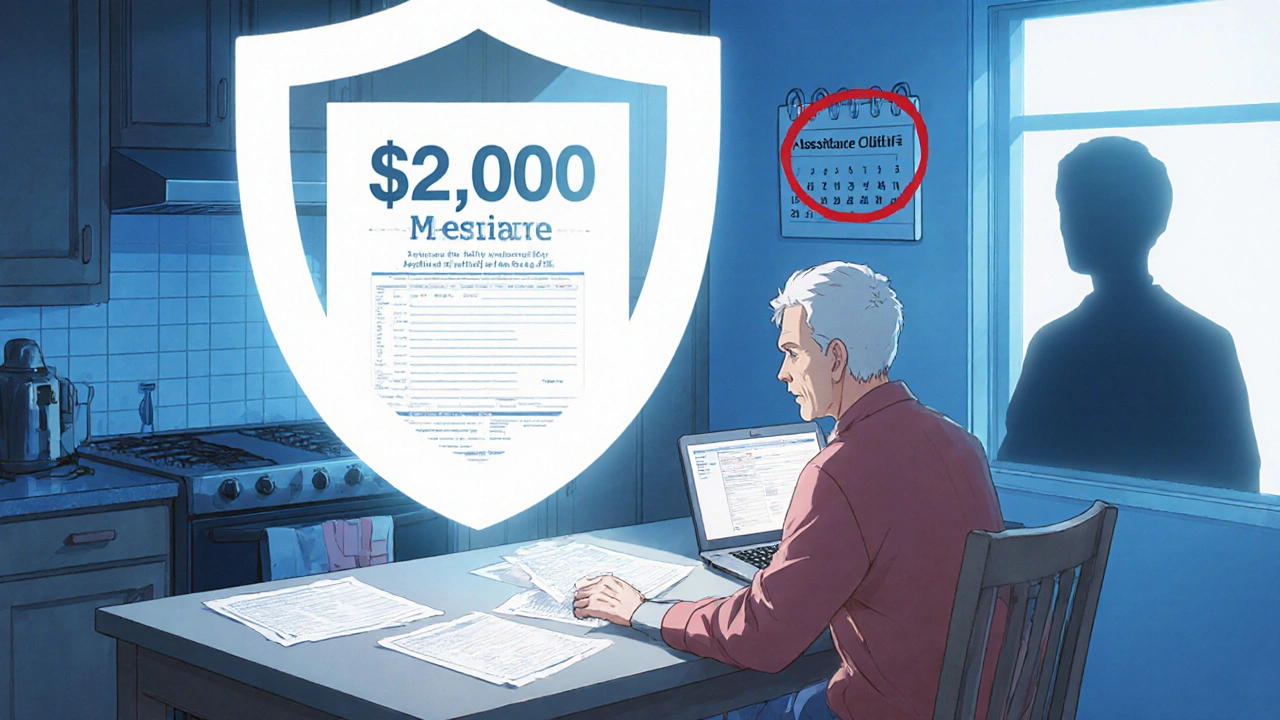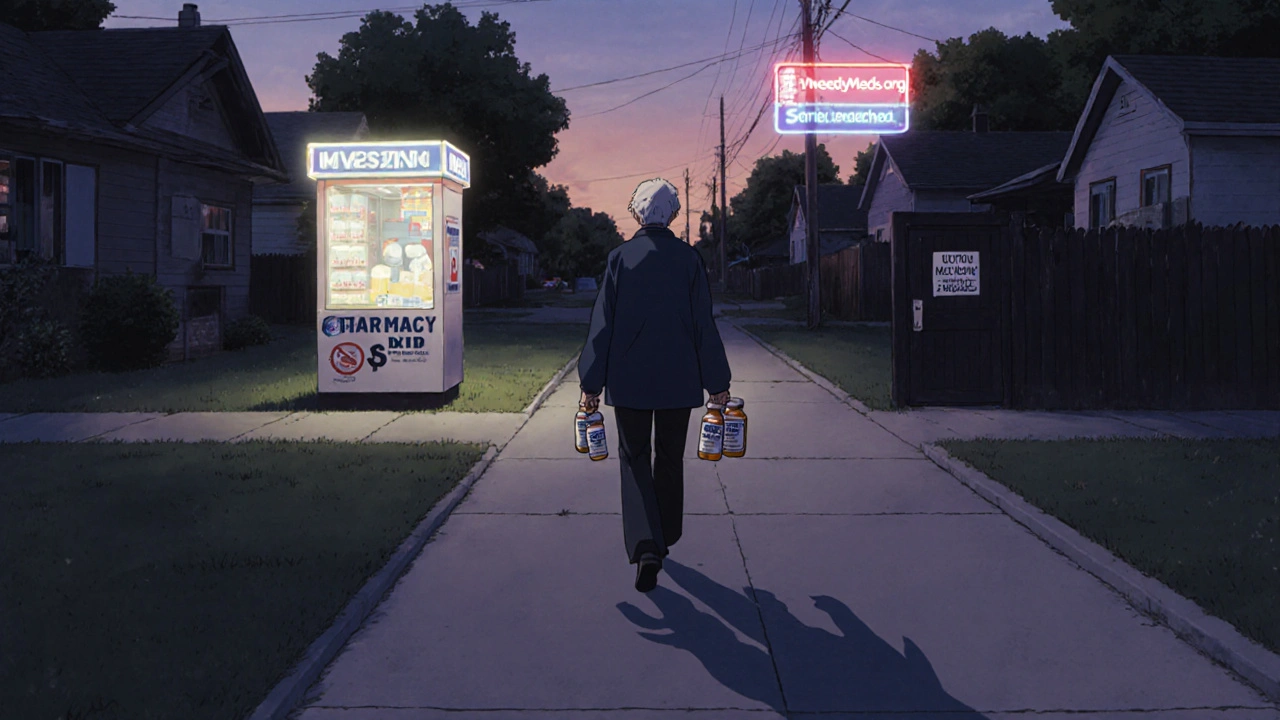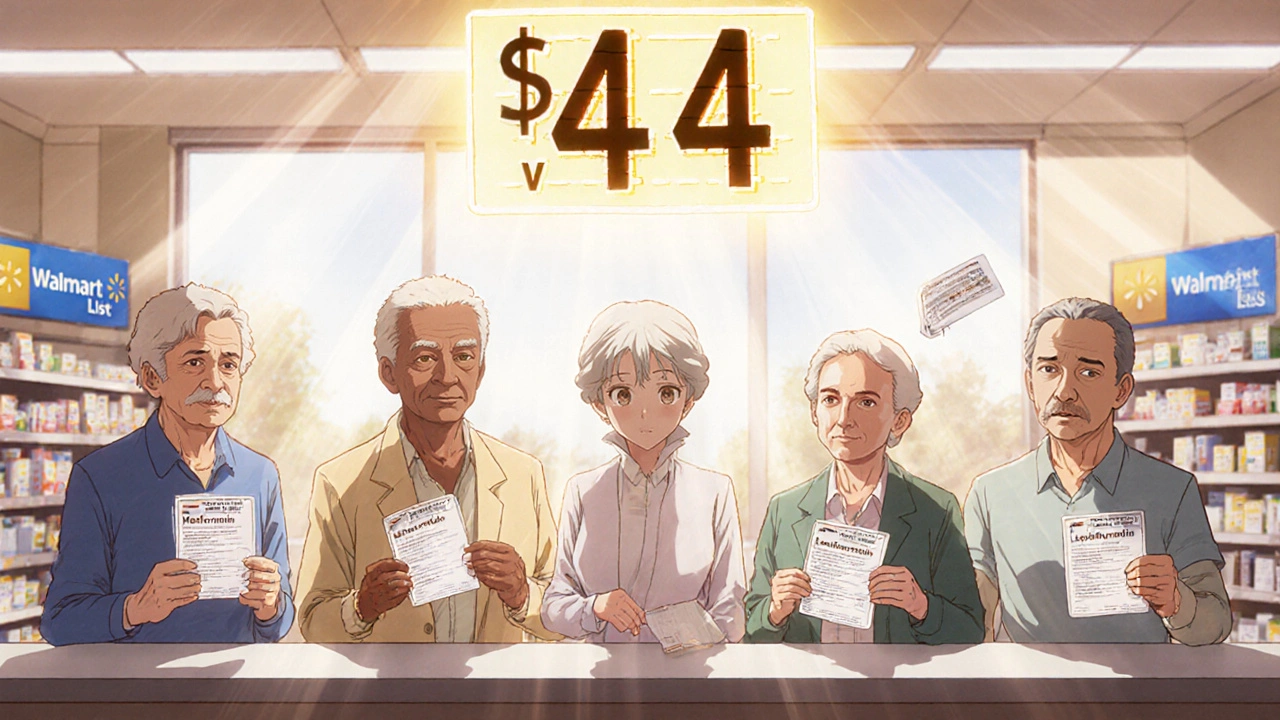Many people assume that because generic medications are cheaper, they don’t need help paying for them. But that’s not true. Even though generics cost 80-85% less than brand-name drugs, copay assistance for generics is still critical for millions of Americans who struggle to afford their monthly prescriptions. For someone on a fixed income, paying $10 for metformin, $16 for levothyroxine, and $6 for lisinopril adds up fast-especially when insurance doesn’t cover the full cost. And if you earn just above Medicaid limits? You’re stuck in a gap where no help exists.
Why Generics Still Need Financial Help
Generic drugs are the backbone of U.S. prescriptions. They make up 92% of all prescriptions filled, but only 23% of total drug spending. That sounds great-until you realize that 30 million Americans rely on them every day. And for many, even $5-$10 per prescription is too much. Take Medicare beneficiaries. In 2024, the average copay for a generic was $0.41-$1.01 under standard Part D plans. Sounds low, right? But that’s only if you’ve already met your deductible. Many seniors pay $0-$44 upfront before insurance kicks in. For someone taking five generics a month, that’s $20-$220 just to start getting coverage. And if you’re not on Extra Help, you’re still responsible for the full cost until you hit the $8,300 out-of-pocket cap in 2024. The real problem isn’t the price of the pill-it’s the system. Manufacturer copay cards for brand-name drugs are everywhere. But generic makers? They don’t offer them. Why? Thin margins. A generic drug might only make $0.10 profit per pill. There’s no room for coupons or discounts from the maker. So help has to come from elsewhere.Where to Find Help for Generic Medications
There are four main places to look for assistance with generic drugs:- Medicare Extra Help (Low-Income Subsidy) - This is the most powerful program for seniors. In 2025, it caps your generic copay at exactly $4.90 per prescription. If you qualify, you also get no deductible and no coverage gap. To qualify, your income must be below $21,870/year for individuals or $29,580 for couples (2025 limits). You automatically qualify if you get Medicaid, SSI, or a Medicare Savings Program.
- Pharmacy Discount Programs - Walmart, Kroger, Costco, and independent pharmacies offer lists of generics for $4, $10, or $15. Walmart’s $4 list covers about 150 drugs, including common ones like atorvastatin, metformin, and lisinopril. No insurance needed. No application. Just show the coupon at the counter. But here’s the catch: you can’t combine it with your insurance. If your plan already covers it for $5, you’re better off using insurance. But if your copay is $20? Use the discount.
- Nonprofit Assistance Programs - Organizations like PAN Foundation, NeedyMeds, and the Patient Access Network offer grants for specific conditions. But here’s the catch: only 17 of PAN’s 72 programs cover drugs that are mostly generic. So if you’re taking generics for high blood pressure, diabetes, or thyroid issues, your odds are low. Approval rates jump to 78% if your income is under 250% of the federal poverty level ($37,150 for one person in 2025), but drop to 12% if you’re between 250-400% FPL.
- State Health Insurance Assistance Programs (SHIP) - Free, local counselors help you apply for Extra Help, Medicare Savings Programs, and other state-based aid. They handled 1.2 million generic cost inquiries in 2023. Their advice? Apply early. The process takes 45-90 days. And 41% of applications are denied because people miss one document-like a tax return or bank statement.
The $2,000 Cap Is Coming-And It Changes Everything
Starting January 1, 2025, the Inflation Reduction Act will cap Medicare Part D out-of-pocket spending at $2,000 per year. That’s down from $8,300. For people taking mostly generics, this is huge. Why? Because generics are cheaper, so you need more refills to hit the cap. That means you’ll reach the $2,000 limit faster than someone taking expensive brand-name drugs. For example: If you pay $10 per generic prescription and refill 200 times a year, you hit $2,000. But if you take a $500 brand-name drug with a $10 copay card, you only refill 4 times to hit $40. So you’d need 50 times more refills to hit the cap. Generics win here. Also starting in 2025: insulin will cost no more than $2.00 per month-even the generic versions. Deductibles will disappear for Extra Help recipients. And Part D plans must now ensure no one pays more than $100 per quarter for generics during the coverage gap. This doesn’t fix everything. It doesn’t help people under 65 with commercial insurance. And it doesn’t help those who earn too much for Medicaid but too little to afford $30/month in copays. But for Medicare beneficiaries, it’s a game-changer.
The Assistance Gap: Who Gets Left Behind
The biggest problem isn’t the cost of the drug-it’s the gap between eligibility rules. Let’s say you’re 62, working two part-time jobs, making $2,100 a month ($25,200/year). You take three generics: levothyroxine, metformin, and lisinopril. Your monthly copay is $32. You’re too rich for Medicaid. You don’t qualify for Extra Help. No manufacturer offers a coupon. Your pharmacy discount card says your metformin is $10, but your insurance says it’s $16. You don’t know which to use. So you skip a refill. That’s what 38% of people do, according to a 2023 study in the Annals of Internal Medicine. This is the “assistance cliff.” You’re not poor enough for government aid. You’re not sick enough for a nonprofit grant. And you’re not on a brand-name drug that has a copay card. You’re just… stuck. A 2024 report from the Government Accountability Office found that 2.3 million near-poor seniors could face dramatically higher costs by 2026 because they fall just above income thresholds. That’s not a glitch. It’s how the system is built.How to Get Help-Step by Step
If you’re struggling to pay for generics, here’s what to do:- Check if you qualify for Medicare Extra Help - Go to medicare.gov and use the Extra Help eligibility tool. You can apply online or call 1-800-MEDICARE.
- Ask your pharmacist about discount programs - Don’t assume your insurance is the best deal. Ask: “Is this drug on your $4 or $10 list?” Many pharmacists won’t bring it up unless you ask.
- Use NeedyMeds.org - Search your drug name. It lists every discount, grant, and program available. It’s free and updated daily.
- Contact your local SHIP counselor - Find them at shiptacenter.org. They’ll walk you through applications. No charge.
- Apply for multiple programs at once - Successful applicants use an average of 2.3 assistance sources. Don’t wait for one to be approved. Start all of them.

What Doesn’t Work
Avoid these common mistakes:- Assuming generics don’t need help. They do. 26% of U.S. adults say they skip doses because of cost.
- Trying to stack discount cards with insurance. You can’t. Choose one or the other.
- Waiting until you run out of pills to look for help. Applications take weeks. Plan ahead.
- Thinking manufacturer cards apply to generics. They don’t. Not even close.
What’s Next
The system is changing. The $2,000 cap in 2025 will save Medicare beneficiaries billions. But for non-Medicare patients, nothing’s changing yet. The HELP Copays Act, introduced in October 2023, would require insurers to count copay assistance toward out-of-pocket maximums-even for generics. But it’s stalled in Congress. For now, the best defense is knowledge. Know your drug prices. Know your options. Know your income limits. And never assume you’re on your own.Can I use a pharmacy discount card with my insurance for generics?
No. You have to choose one or the other. If your insurance copay is $5 and the pharmacy discount is $4, use the discount. If your insurance copay is $20 and the discount is $10, use the discount. But you can’t combine them. The pharmacy system won’t let you.
Do generic drug manufacturers offer copay cards?
Almost never. Generic manufacturers operate on very thin profit margins-sometimes less than $0.10 per pill. They don’t have the resources to offer copay assistance like brand-name companies do. Help for generics comes from pharmacies, nonprofits, and government programs, not drug makers.
What if I make too much for Medicaid but still can’t afford my generics?
You’re in the “assistance gap.” This affects millions. Your best bets: pharmacy discount programs (Walmart, Kroger), NeedyMeds for free coupons, and your local SHIP counselor. Apply for Extra Help anyway-even if you think you’re over the limit. Sometimes income is calculated differently than you think.
Will the $2,000 out-of-pocket cap in 2025 help me if I’m under 65?
No. The $2,000 cap only applies to Medicare Part D beneficiaries. If you have private insurance, you’re still subject to your plan’s deductible and copay structure. Some states are starting to pass their own caps, but there’s no federal protection for non-Medicare patients yet.
How do I know if my generic drug is on a $4 list?
Ask your pharmacist directly. Or check Walmart’s website-they list their $4 generics online. Kroger, Target, and CVS also publish their lists. Common ones include metformin, lisinopril, atorvastatin, levothyroxine, and amoxicillin. If your drug is on the list, it’s usually cheaper than your insurance copay.


Comments
Kihya Beitz
So let me get this straight - we’re telling people to choose between $4 at Walmart and $16 through insurance… but if they pick the $4, their insurance doesn’t count it toward their deductible? Brilliant. Just brilliant. 😒
Meanwhile, the pharmaceutical companies are laughing all the way to the bank while we’re over here playing pharmacy roulette. I swear, if I had a dollar for every time I was told ‘just apply for Extra Help’… I could afford my meds without any of this nonsense.
And don’t even get me started on NeedyMeds. That site’s like a haunted house - you click one link and three pop-ups scream ‘DON’T YOU KNOW YOU’RE DYING?’ at you. I’m not a patient. I’m a spreadsheet.
Also, why is it that the only people who can afford to wait 90 days for approval are the ones who already have savings? Everyone else is just skipping pills until they end up in the ER. Classic.
Jennifer Walton
The system isn’t broken. It’s working exactly as designed.
Generics are a cost-saving illusion. The real cost is in the administrative friction, the eligibility cliffs, the bureaucratic inertia.
We treat medicine like a vending machine. Insert coin. Receive pill. No thought required.
But health isn’t a commodity. It’s a condition. And we’ve turned it into a puzzle only the wealthy can solve.
Andrew Eppich
It is unfortunate that so many individuals lack personal financial responsibility. If one cannot afford a $10 monthly copay, perhaps employment status or lifestyle choices require reevaluation.
Government assistance programs exist for a reason - to support those truly in need. Those who earn just above the threshold are not victims of systemic failure; they are victims of poor planning.
Moreover, the notion that generic drugs require subsidies is misleading. The market has already solved this problem through discount pharmacies. If one cannot locate a $4 list, that is a failure of personal initiative, not policy.
Jessica Chambers
So… I’m supposed to choose between my insurance and Walmart’s $4 list? 😅
And if I pick Walmart, my insurance doesn’t count it? So I’m basically paying twice for the same thing? 😂
Thanks for the laugh, America. I’ll just skip my meds until I hit the $2,000 cap. You know, like a normal person.
Shyamal Spadoni
you ever wonder why the gov lets this happen? its not about money its about control. they want you dependent on their system so you cant rebel. the $2000 cap? its a trap. they know most people will never reach it because theyll skip meds. and if you do reach it? theyll raise the limit next year. its all a psyop. the drug companies are owned by the same people who run the FDA. they make the rules so you stay sick. they dont want you healthy. healthy people dont buy pills. they want you on metformin for life. levothyroxine forever. lisinopril till you die. its a cycle. theyll never fix the gap. why? because if you could afford your meds youd stop voting for them. they need you desperate. they need you confused. they need you scrolling neeedy meds at 2am crying because you cant afford your thyroid pill. its not an accident. its intentional.
Ogonna Igbo
Why do Americans always cry about $10 pills? In Nigeria we pay 500 naira for metformin - that’s less than a dollar. No insurance. No coupons. No programs. You walk into a pharmacy, pay cash, leave. No forms. No bureaucracy. No one asks if you qualify. No one cares if you’re above or below some line. You need medicine? You get it. Simple. No drama. No ‘assistance gap’. Just life. Your system is broken because you overthink everything. Stop making medicine a political sport.
Aidan McCord-Amasis
Walmart’s $4 list is a lifesaver. Period. 🙌
Also - why is no one talking about how the $2,000 cap is going to be a win for generics? That’s the real win here.
People taking 5 meds a month? You’re hitting that cap in 4 months. Game over for Big Pharma.
Adam Dille
I used to skip my lisinopril because I couldn’t afford it. Then I found out my local CVS had it for $10. No insurance needed. Just showed up. Paid. Walked out.
It’s not glamorous. It’s not a policy fix. But it works.
And honestly? I’m not mad at the system anymore. I’m just… done waiting for it to fix itself. I take matters into my own hands now. And so should you.
Katie Baker
Thank you for writing this. I’ve been in the assistance gap for 3 years. Took me 6 months to get Extra Help approved. I cried when I got the letter.
Now I use Walmart for metformin, NeedyMeds for levothyroxine, and my SHIP counselor checks my applications every quarter. I’m not perfect. But I’m alive.
You’re not alone. I see you. Keep going.
John Foster
There is a deeper truth here that no one dares to speak: the entire pharmaceutical-industrial complex is built upon the illusion of scarcity. We are conditioned to believe that medicine is scarce - that it must be rationed, that it must be priced, that it must be ‘earned’ through income thresholds and bureaucratic rituals.
But the chemical compounds themselves? They are not rare. The knowledge to produce them? Widely available. The cost of synthesis? Negligible.
What is scarce is compassion. What is scarce is the moral courage to say: health is a right, not a privilege.
And so we play this game - $4 lists, $10 coupons, 90-day wait times - as if the solution lies in cleverer workarounds, when what we need is revolution.
We are not broken. We are being broken.
Edward Ward
Let’s clarify a few things - first, the $2,000 cap is indeed a monumental shift, but only for Medicare Part D enrollees - which is approximately 65 million Americans - and even then, it doesn’t address the structural inequities faced by those under 65 with private insurance, which covers nearly 170 million people. Second, the fact that generic manufacturers don’t offer copay cards isn’t just a ‘thin margin’ issue - it’s a deliberate regulatory avoidance. Brand-name companies are incentivized to offer coupons because they’re allowed to under the Medicare Part D rules, while generics aren’t. Why? Because the law was written to protect brand-name profits - not patient access. Third, the 41% denial rate for SHIP applications? That’s not user error - that’s systemic neglect. The forms are intentionally complex, the documentation requirements are inconsistent across states, and the training for counselors is underfunded. This isn’t a gap - it’s a chasm. And finally - the HELP Copays Act? It’s not stalled because of partisan gridlock - it’s stalled because the pharmaceutical lobby spent $312 million on lobbying in 2023 alone - more than any other industry. We’re not fighting bureaucracy. We’re fighting a billion-dollar industry that profits from your suffering. And until we treat drug pricing like a public health emergency - not a market problem - nothing will change.